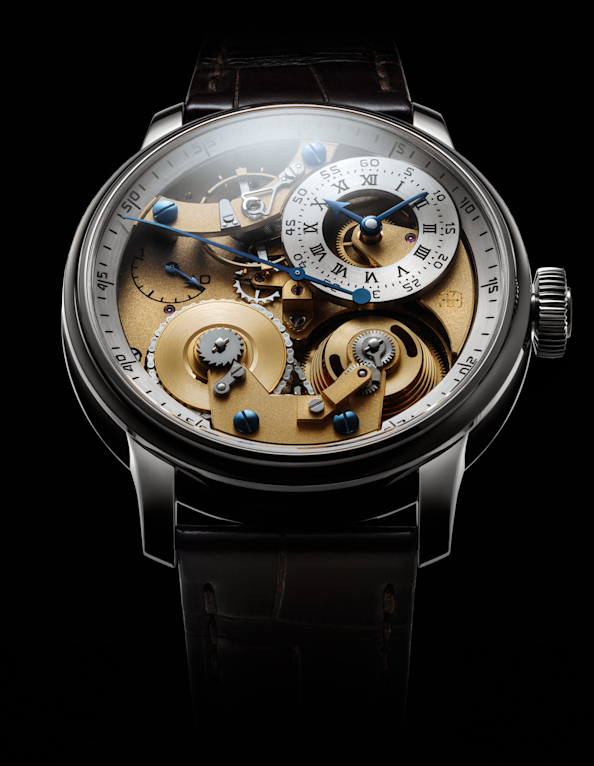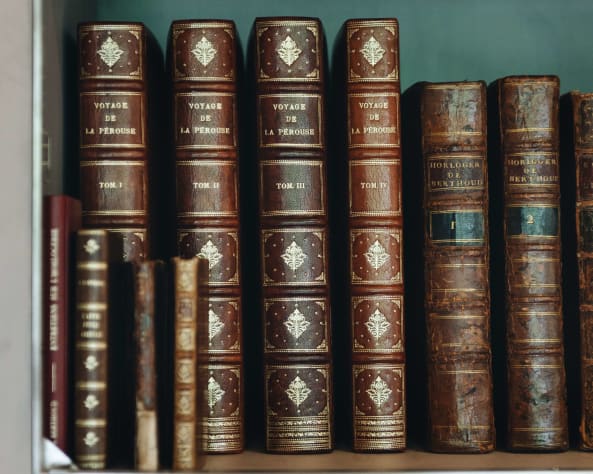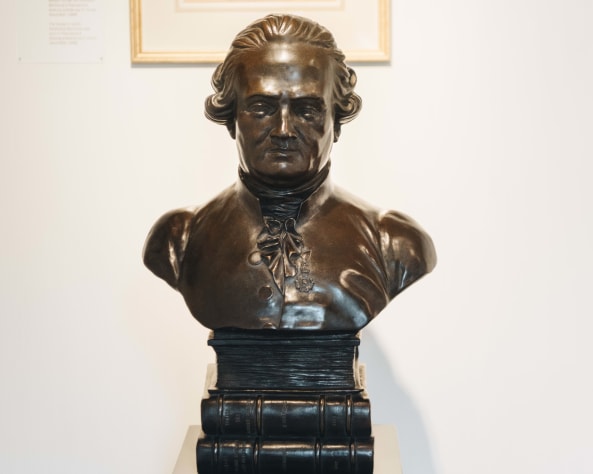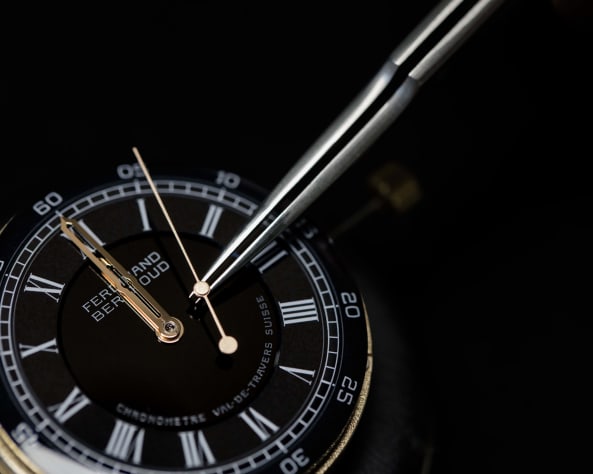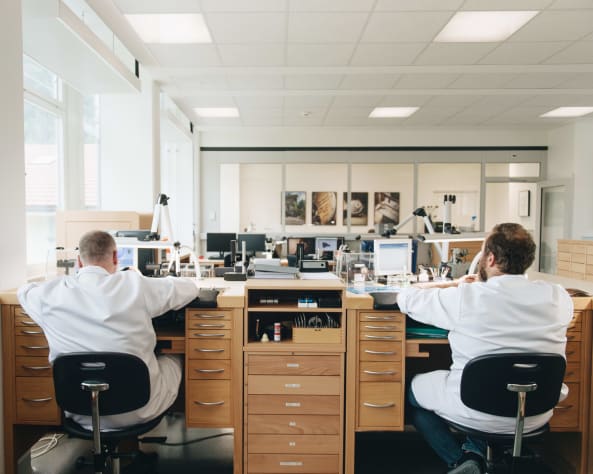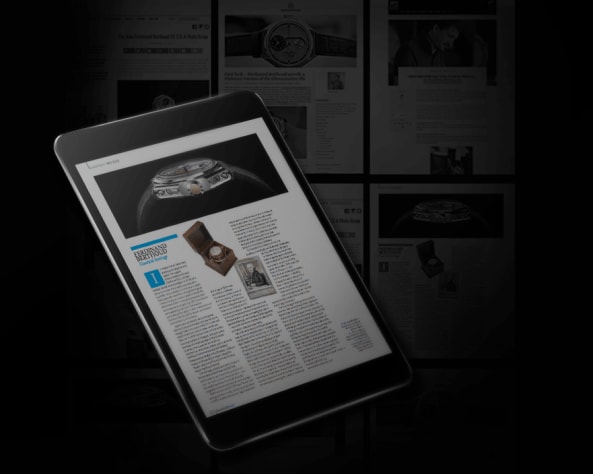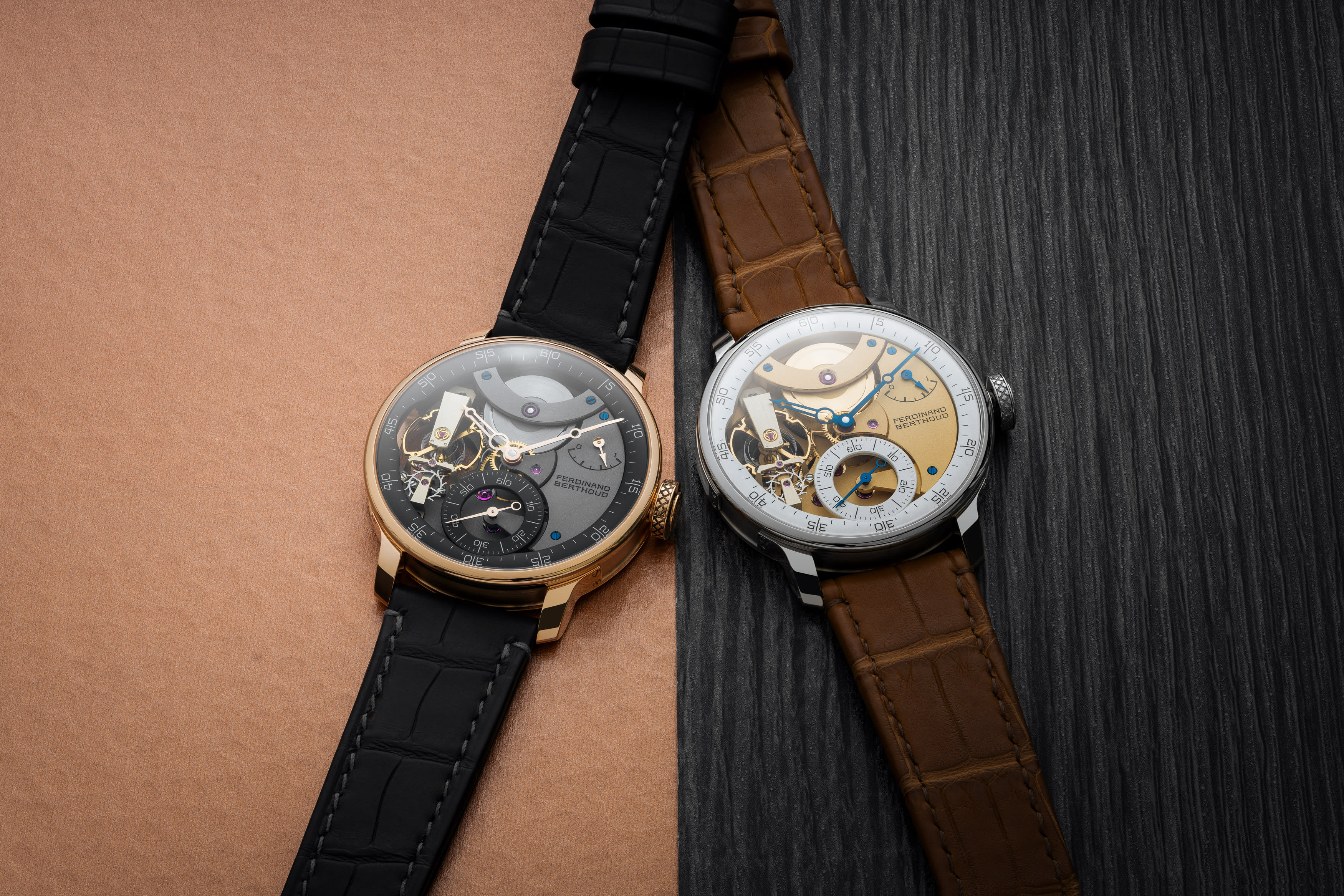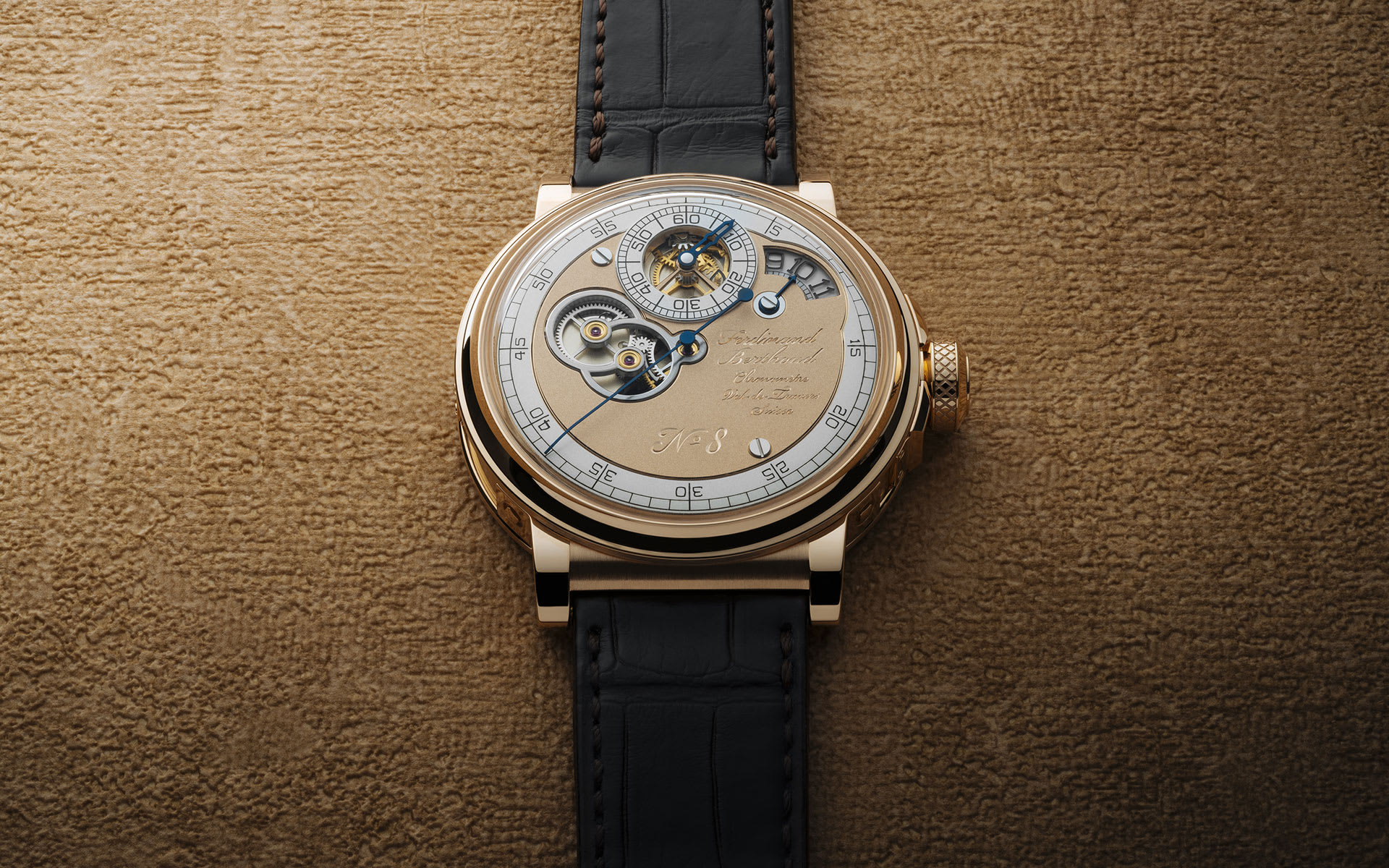
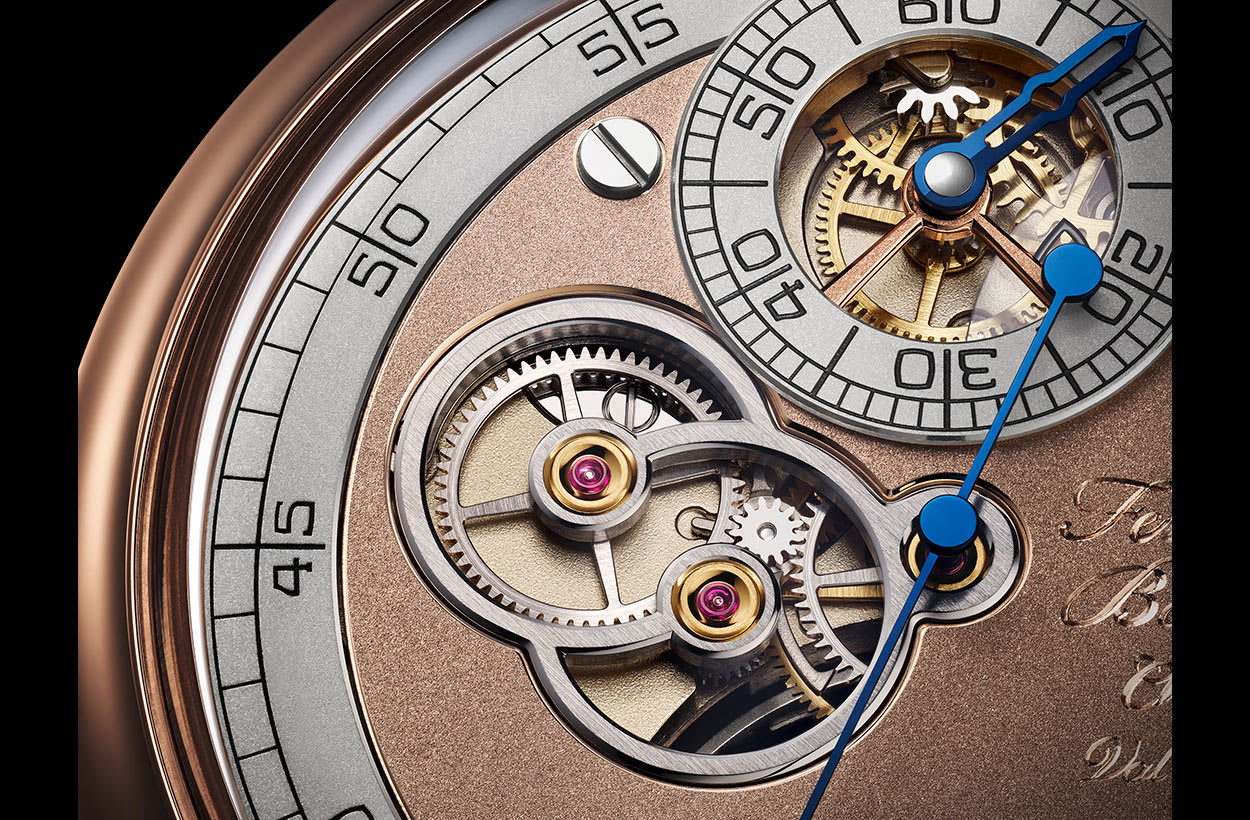
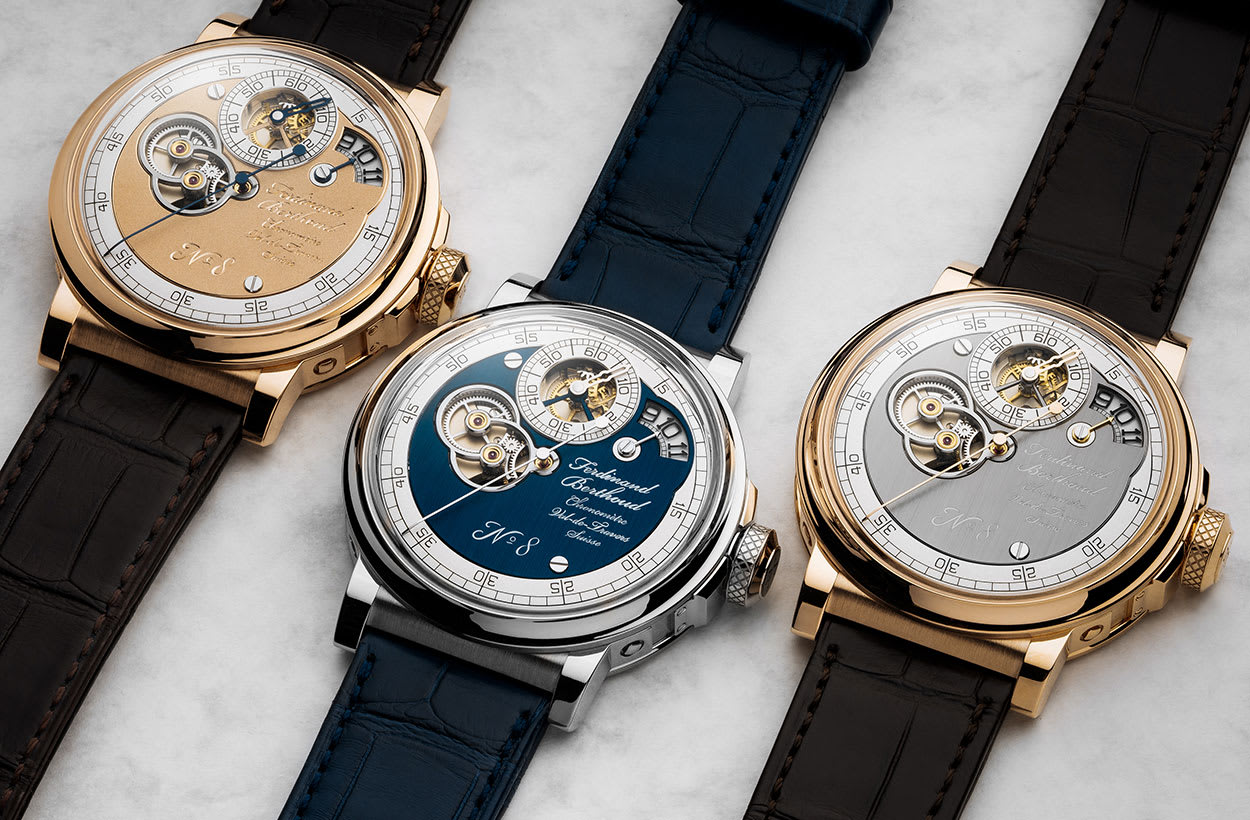






Ferdinand Berthoud devoted his life to experimentation and to passing on his knowledge by publishing numerous specialised works and training apprentices. The Chronomètre FB RSM continues this tradition by enabling a young watchmaker from the University of Neuchâtel to participate in the development of the movement as part of his graduation project.
The FB-T.FC-RSM calibre, a tourbillon regulator with fusee-and-chain transmission, for the first time incorporates two complications appreciated by discerning collectors: independent deadbeat seconds visible on the dial side and a stop-seconds mechanism.
The historical source: Marine Clock No. 8
The Chronomètre FB RSM stands at the crossroads of the paths once trodden by Ferdinand Berthoud: between exploration and transmission, as well as between precision and innovation. Its design is inspired by the Marine Clock No. 8, known as H.M.8.
This is a very unusual clock. Dated 1768, it has a regulator-type display, meaning the indication of the hours, minutes and seconds is not coaxial. This type of display made it possible to improve the reading of time and thus to serve as a reference for seaborne navigation measurements: this is the role of a ‘time-keeper’ instrument in the truest sense of the term. The hours are indicated on a disc at 2 o'clock. The minutes are also off-centred, with a dedicated counter at 12 o’clock. The seconds hand reigns supreme, occupying the central part of the watch face and advancing in one-second jumps (based on the ‘deadbeat’ seconds principle). All these functions are driven by a vertical movement, regulated by a thermo-compensated balance-spring equipped with inertia blocks.
Unique architecture
The FB-T.FC-RSM calibre features a pillar-type architecture, in which both the barrel and the inverted fusee are suspended and patented. This fusee-and-chain mechanism is inspired by that of Ferdinand Berthoud's marine chronometers. It ensures the distribution of energy by delivering ‘constant force’ to the patented tourbillon with direct-drive seconds.
This construction reduces the thickness of the movement – which at just 9.89 mm remains very thin for its category despite the regulator-type display and the integration of an independent deadbeat seconds mechanism.
An exclusive horological complication, created during an apprenticeship
In terms of both display and operation, the Chronomètre FB RSM offers a present-day take on the regulator-type principle. The hours are read off via a rotating disc at 2 o'clock; the minutes are indicated by a facetted and skeletonised hand on the subdial at 12 o'clock; and, as a symbol of precision, the seconds hand occupies a central position on the watch face. The “SM” letters added to the calibre reference pertain to the deadbeat seconds mechanism (seconde morte in French), while a balance-stop device enables the tourbillon to be stopped when setting the time to the exact second.
In keeping with the tradition cherished by Ferdinand Berthoud, this complication was developed with a young apprentice watchmaker who devoted his graduation project to it. His work combined the history of deadbeat seconds clocks, the identification of related patents, and the development of the complication for the Tourbillon Régulateur à Force Constante (constant-force tourbillon regulator) calibre which was to house it. Chronométrie Ferdinand Berthoud also wanted this complication to fit into the movement’s existing dimensions, while guaranteeing precision-timing performance duly attested by the COSC chronometer certification.
Deadbeat seconds and balance-stop device: the challenges of chronometry
The creation of a deadbeat seconds mechanism is a major challenge for any watch that claims to earn chronometer certification. This is because stopping and restarting the central hand in one-second jumps involves three steps: stopping the gear train concerned; storing the torque it continues to produce during this pause; and then releasing it all at once after one second. Since the regularity of the torque is the essence of a constant-force calibre, interrupting its flow 60 times a minute without compromising its linearity is a true technical feat – which is why the majority of deadbeat seconds movements fail to achieve COSC certification. The Chronomètre FB RSM has been awarded this certification and is therefore a true timekeeper, like the Marine Clocks by the Master Watchmaker himself.
The 18-carat gold dial is hand-engraved and bears the "No. 8" inscription like the original No. 8 Marine Clock, the inspiration for the FB RSM model. The deadbeat seconds mechanism is visible through a special symbolically figure-eight-shaped aperture at 9 o'clock
Only 20 movements will be produced, and several key exterior elements can be chosen by the collector. They may be fitted inside a round or octagonal case. The 18-carat gold dial may retain its natural colour or receive a PVD treatment, giving it a glimmering metallic sheen. The 53-hour power reserve is visible from the back, close to the three key components of the FB-T.FC.RSM suspended movement: the fusee, the barrel and the tourbillon with direct-drive seconds.
***
Additional background knowledge
A longstanding tradition of apprenticeship
Few watchmakers can boast Ferdinand Berthoud's consistency in transmitting and perpetuating his knowledge. Barely had he opened his Paris workshop when he took his first apprentice under his wing for eight years. Jacques-Vincent Martin followed in 1766 and actually spent 20 years at Berthoud's side. Ferdinand also taught watchmaking to his nephew Pierre-Louis Berthoud (1754-1813), known as Louis Berthoud, as well as to a Spanish apprentice, Cayetano Sánchez, who was sent to learn from Ferdinand Berthoud how to maintain the clocks sent to the Spanish Armada in its quest to conquer the oceans. Ferdinand Berthoud also trained Jean Martin, another brilliant apprentice who cooperated with his master in creating several longitude clocks and astronomical pocket watches.
These examples illustrate the two main focuses of Ferdinand Berthoud's career: the development of Marine Clocks, and the constant concern for passing on and recording his knowledge. In recognition of his skills in the first aspect of his work, he was awarded the title of Horloger mécanicien du Roi et de la Marine (Watchmaker-Mechanic by appointment to the King and Navy) in 1770. He expanded the second aspect through an extremely abundant body of literature: about ten works and treatises, in addition to his contributions to the Encyclopaedia of Diderot and d'Alembert.
Why the Marine Clock No. 8?
Marine Clock No.8, owned by Louis XV, was tested at sea for two years (1768 - 1769). It is kept at the National Conservatory of Arts and Craft (CNAM) in Paris.
The choice of this clock as a source of inspiration owes nothing to chance: it was this creation that earned Ferdinand Berthoud his precious royal warrant in 1770. This historic timepiece most probably benefited from the collaboration of the master's apprentice, Jacques-Vincent Martin, who had entered the service of Ferdinand Berthoud two years earlier, in 1766. The young man was to become a leading watchmaker and in 1786 was appointed Director of the Dépôt des Horloges Marine in Brest.
